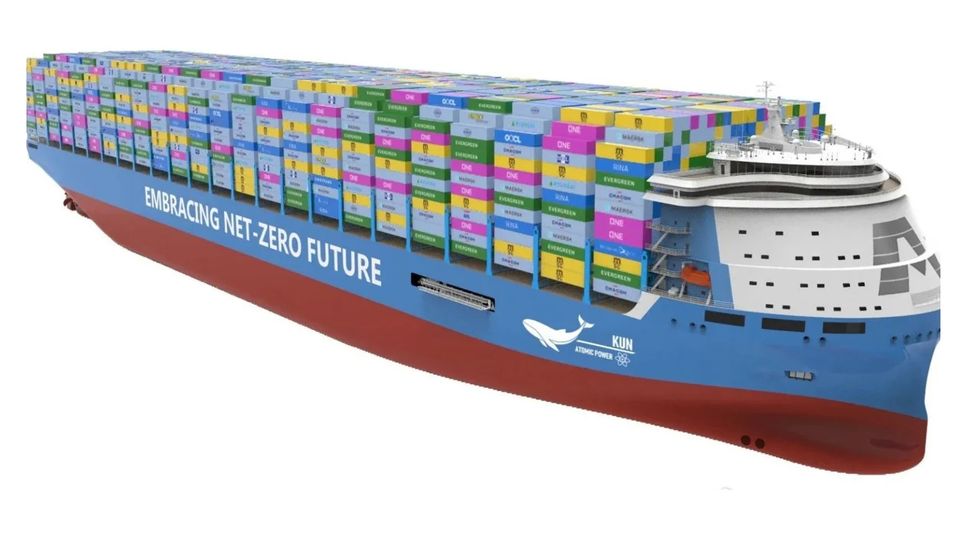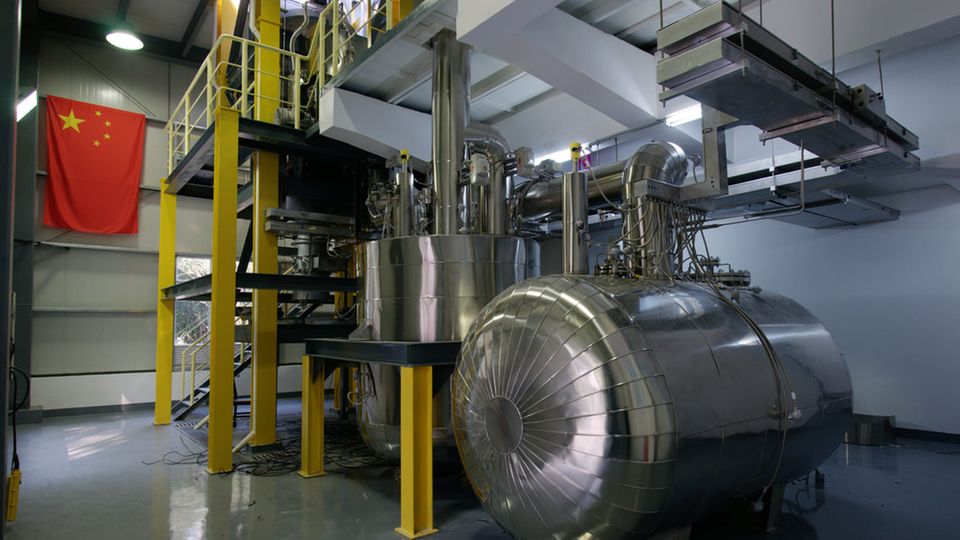Nuclear technology
CO2-free shipping – China is planning nuclear-powered container giants
A shipyard worker in China paints a ship’s hull: the planned KUN-24AP would be the largest container ship in the world (symbolic photo)
© Xinhua/Imago Images
Fossil-free thanks to nuclear power: China has been researching compact and cheap thorium reactors for years. Such a mini power plant is now supposed to power a huge container ship. It would then drive without CO2 emissions.
Nuclear submarines and aircraft carriers get their energy from nuclear reactors. For a time, the US also built nuclear-powered cruisers. In the civilian sector, apart from research ships, there are currently only nuclear-powered icebreakers.

A model of the planned container giant KUN-24AP: With space for 24,000 standard containers, it would be the largest ship ever built in the world.
© X
Mostly military use
The idea of nuclear propulsion is not revolutionary new. The special feature lies in the type of reactor planned. The The container giant will be powered by a fourth-generation molten salt reactor. This thorium reactor uses a completely different technology than the well-known uranium reactors. Cooling with molten salt at high temperatures and low pressure significantly increases safety. If the system were to break, large amounts of radioactively contaminated water vapor would not be released into the atmosphere; the molten salt would immediately turn into crystal at ambient temperatures. The radioactive fallout is accordingly localized.
Potential of thorium technology
China has been working on small thorium reactors for years, and a first experimental model went into operation at the beginning of 2023. However, due to the military importance of the project, there is little accessible information. The actual reactor – not the entire power plant – can be built the size of a bathroom or container. This means that production can take place in one hall. The reactors are delivered fully assembled and can be sent back to the factory for maintenance.
These reactors also have geopolitical significance for China. They could be exported as electricity suppliers to countries that do not have their own nuclear know-how. In the case of a container ship, the use would mean “zero emissions”. The unveiling of the KUN-24AP is a further step towards consolidating China’s position in international shipbuilding. Currently, around 50 percent of all shipping tonnage worldwide is manufactured in China, and the proportion is rising rapidly.



